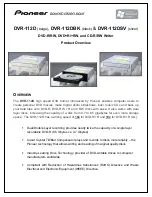
1.4 USS - Bus structure
BU 0050 GB-3111
Subject to technical amendments
23
1.4 Bus Configuration
1.4.1
General information
The basis for the physical interface of the USS protocol is the 'Recommended Standard RS-485'
For point-to-point connections, a sub-set of EIA RS-232 (CCITT V.24), TTY (20mA current loop) or optic fibre
cable can be used as the physical interface.
SK 300E and SK 500E series inverters are always configured with an RS485 interface on the terminal
connection bar or connector. For SK 700E series devices, the customer interface standard or USS must be
selected.
For the SK 700E series, RS 232 technology modules can be used for communication (only point-to-point
communication possible)
1.4.2
Topology
The USS bus is based on a linear topology without spur cables. Both ends of the lines end at a participant and
must be terminated there with bus termination networks.
The maximum cable length and the maximum distance between the master and the last slave is restricted by
the properties of the cable, the ambient conditions and the transfer rate. With a transfer rate < 100kbit/s, a
maximum
length of 1200m
is possible.
[EIA Standard RS-422-A December 1978, Appendix, Page 14]
The number of participants is restricted to 32 (1 master, 31 slaves).
1.4.3
Transfer Method
Transfer is by the half-duplex method, i.e. alternation between transmission and reception, and must be
controlled by the software. The half-duplex method allows the use of the same cables for both transfer
directions.
This enables simple and low-cost bus wiring, operation in environments where there is interference as well as
a high data transfer rate.
















































